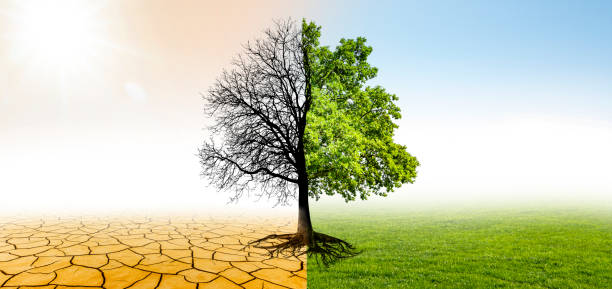Climate change is one of the greatest challenges humanity has ever faced. Rising global temperatures, melting ice caps, devastating floods, prolonged droughts, and record-breaking wildfires are not just distant warnings—they are realities unfolding before our eyes. The Earth, our only home, is changing rapidly, and the choices we make today will shape the future of life on this planet.
But amid the growing crisis, there is hope. That hope comes from human creativity, innovation, and above all, science. From satellites orbiting above our atmosphere to laboratories experimenting with clean energy breakthroughs, science provides both the knowledge to understand climate change and the tools to combat it. Without science, climate change would remain a mystery; with science, it becomes a challenge we can meet.
Here, we explore ten of the most powerful ways science helps fight climate change. These are not abstract ideas, but concrete ways that human ingenuity is reshaping our relationship with the planet and offering a path to a more sustainable future.
1. Understanding Climate Change Through Research and Data
The first way science helps us fight climate change is by revealing the truth about it. For centuries, humans noticed weather patterns and seasonal changes, but it wasn’t until the rise of modern science that we could connect human activity with global climate shifts.
Through climate science, researchers use a combination of observations, experiments, and models to track how greenhouse gases—like carbon dioxide, methane, and nitrous oxide—trap heat in the atmosphere. Ice core samples drilled from Antarctica reveal atmospheric data stretching back hundreds of thousands of years, showing that today’s carbon dioxide levels are unprecedented in human history.
Satellites now monitor Earth’s systems in real time: tracking global temperatures, sea level rise, deforestation, and even methane leaks from oil fields. Climate models, built on physics and computer simulations, allow scientists to project future warming under different scenarios. These models make clear that human activity is the primary driver of climate change.
By providing solid evidence, science does more than diagnose the problem—it arms us with knowledge. Without research and data, climate change could still be dismissed as speculation. With it, humanity cannot ignore the truth.
2. Renewable Energy Technologies
One of the greatest scientific weapons against climate change is the development of renewable energy. For over a century, fossil fuels like coal, oil, and natural gas powered our cities, industries, and vehicles—but at a catastrophic cost. Burning fossil fuels releases massive amounts of greenhouse gases, heating the planet.
Science has given us alternatives that are cleaner, safer, and increasingly affordable. Solar power harnesses the limitless energy of the sun. Wind turbines convert the motion of the atmosphere into electricity. Hydropower, geothermal energy, and tidal power tap into Earth’s natural forces.
Research and innovation have driven costs down dramatically. Solar panels today are over 90% cheaper than they were in the 1970s, and wind energy is among the cheapest forms of power in many countries. Advances in energy storage, such as lithium-ion batteries and next-generation solid-state batteries, allow renewable energy to be stored and used when the sun isn’t shining or the wind isn’t blowing.
By replacing fossil fuels with renewable energy, science is cutting emissions, creating jobs, and building a cleaner, more resilient energy system.
3. Carbon Capture and Storage
Even with renewable energy, the world still relies heavily on fossil fuels. That’s where carbon capture and storage (CCS) comes in. This technology directly targets emissions by capturing carbon dioxide before it escapes into the atmosphere.
In power plants or industrial facilities, carbon dioxide can be trapped, compressed, and either stored underground in geological formations or reused in products like building materials. For example, captured CO₂ can be injected into concrete, making it stronger and reducing the carbon footprint of construction.
Science has also advanced direct air capture—machines that literally pull carbon dioxide out of the air. While still expensive, these technologies are rapidly improving. Some pilot projects already operate in places like Iceland, where captured CO₂ is injected into volcanic rock, turning it into solid stone.
Though not a silver bullet, CCS could be a crucial bridge technology, reducing emissions while the world transitions to fully renewable systems.
4. Climate-Friendly Agriculture and Food Science
Agriculture is both a victim of climate change and a major contributor to it. Farming generates around 25% of global greenhouse gas emissions, largely through methane from livestock, nitrous oxide from fertilizers, and carbon released by deforestation.
Science offers solutions to make food systems more sustainable. Plant biologists are developing climate-resilient crops that can withstand drought, heat, and floods. Precision agriculture uses sensors, drones, and artificial intelligence to optimize water and fertilizer use, reducing waste and emissions.
Livestock research has even shown that adding certain seaweeds to cattle feed can drastically reduce methane emissions from cows. Food science also drives innovation in plant-based meats and lab-grown meat, offering alternatives to resource-intensive livestock farming.
Agricultural science not only reduces emissions but also strengthens food security in a warming world. Feeding a growing population while protecting the climate is one of the greatest challenges of our time—and science is our best hope to meet it.
5. Protecting and Restoring Ecosystems
Forests, wetlands, and oceans are nature’s original climate technologies. They absorb billions of tons of carbon dioxide every year, acting as carbon sinks. But human activity—deforestation, pollution, overfishing—has severely weakened these natural defenses.
Science plays a key role in restoring ecosystems. Ecologists use satellite data and drones to monitor deforestation in real time, helping governments and organizations stop illegal logging. Conservation biology guides reforestation projects that plant trees not just for numbers, but with the right species to maximize biodiversity and carbon storage.
Marine science helps protect coral reefs and restore seagrass beds, both vital for ocean ecosystems and carbon absorption. Advances in genetics even allow scientists to breed or engineer trees and corals that are more resilient to heat and disease.
By blending traditional ecological knowledge with modern technology, science ensures that protecting nature becomes a cornerstone of climate action.
6. Sustainable Transportation
The way we move—cars, planes, ships—accounts for a large share of global emissions. Science is transforming transportation into a cleaner, smarter system.
Electric vehicles (EVs) are the most visible success story. Advances in battery technology, charging infrastructure, and renewable-powered grids have made EVs increasingly competitive with gas-powered cars. Hydrogen fuel cell vehicles offer another zero-emission option, particularly for heavy-duty trucks and buses.
Aviation, one of the hardest sectors to decarbonize, is also being reshaped. Research into sustainable aviation fuels, made from algae or waste products, could cut airplane emissions significantly. Experimental designs for electric planes and ultra-efficient engines point toward a greener future in the skies.
Meanwhile, urban planning and transportation science emphasize public transit, cycling, and walking as climate-friendly ways to reduce car dependence. Smart city designs integrate transportation with renewable energy and digital technologies, creating cleaner and healthier environments.
Transportation science doesn’t just cut emissions—it also reimagines mobility for a sustainable, connected world.
7. Climate Prediction and Early Warning Systems
One of science’s most powerful tools in fighting climate change is its ability to predict the future. Advanced climate models allow scientists to forecast not just global temperature changes but also regional impacts like rainfall, drought, or hurricane intensity.
Early warning systems powered by satellites, artificial intelligence, and supercomputers give communities time to prepare for disasters. For example, meteorological science has significantly improved hurricane tracking, saving countless lives. Climate forecasting also helps farmers adapt to shifting growing seasons, reducing crop losses.
Science doesn’t just warn us—it gives us the ability to act in advance, turning knowledge into resilience. In a warming world, prediction is power, and science provides it.
8. Energy Efficiency and Smart Technology
Sometimes, the most powerful solutions are the simplest: use less energy. Science has revolutionized efficiency across every sector of society.
Modern buildings now use smart sensors to regulate heating, cooling, and lighting, drastically reducing wasted energy. Advances in materials science have created better insulation, energy-efficient windows, and appliances that consume a fraction of the electricity of older models.
On a larger scale, smart grids integrate renewable energy, balance supply and demand, and reduce energy loss. Artificial intelligence helps industries optimize production, minimizing emissions while saving costs.
Efficiency is often overlooked in the climate debate, but science proves it is one of the cheapest and fastest ways to cut emissions—buying us time while deeper transformations take place.
9. Geoengineering and Climate Intervention
Perhaps the most controversial area of climate science is geoengineering—deliberately altering Earth’s systems to counteract climate change. While risky, research in this field reflects the urgency of the crisis.
One proposal is solar radiation management, where aerosols are released into the atmosphere to reflect sunlight and cool the planet. Another approach focuses on ocean fertilization, adding nutrients to stimulate plankton growth, which absorbs carbon dioxide.
Though these ideas are still experimental and raise serious ethical and ecological concerns, studying them is important. Science must explore every possible tool, even the controversial ones, to understand potential risks and benefits.
Geoengineering is not a replacement for cutting emissions, but in a worst-case scenario, it might be a last line of defense. Science ensures that if such tools are ever used, they are guided by knowledge rather than desperation.
10. Inspiring Global Cooperation Through Knowledge
Finally, science fights climate change not only through technology but also by uniting humanity with shared knowledge. Climate change is a global problem, and no nation can solve it alone. International scientific efforts—like the Intergovernmental Panel on Climate Change (IPCC)—bring together thousands of researchers worldwide to assess evidence and guide policy.
Science provides the common ground where nations can agree on facts, measure progress, and build trust. Initiatives like the Paris Agreement are rooted in scientific understanding, using data to set targets and track emissions.
Beyond governments, science empowers individuals. Public awareness campaigns, documentaries, and open data allow ordinary people to understand the stakes and demand action. By sharing truth across borders, science fosters cooperation in the fight for our planet’s future.
Conclusion
Science is humanity’s greatest ally against climate change. It helps us understand the problem, innovate solutions, and inspire action. From renewable energy and carbon capture to resilient crops and early warning systems, science equips us with the tools to rewrite the story of our future.
But science alone is not enough. Its discoveries must be embraced by societies, supported by governments, and demanded by people. The fight against climate change is not just a scientific challenge—it is a moral and collective one.
Still, science lights the path forward. It shows us that a sustainable future is possible—not easy, not guaranteed, but within reach if we choose it. In the face of the greatest crisis of our time, science is not just knowledge. It is hope.






